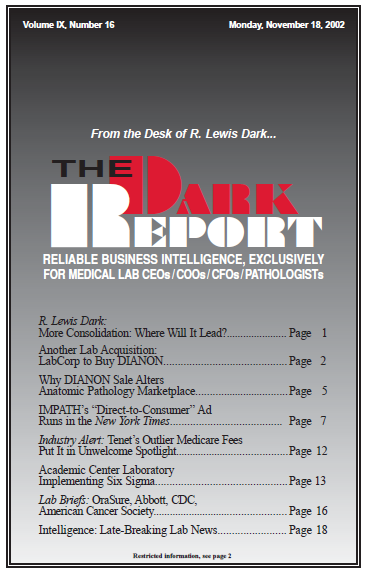Editors Note: There’s increasing pressure for the American healthcare system to deliver improved healthcare out- comes in a cost-effective manner. Not surprisingly, laboratory testing is recognized as a high-impact, low-cost way to accomplish both goals. Here’s a sampling of important healthcare initiatives which emphasize lab testing as essential to higher quality healthcare. FDA APPROVES 20-MINUTE …
OraSure, Abbott, CDC, American Cancer Society Read More »
To access this post, you must purchase The Dark Report.


